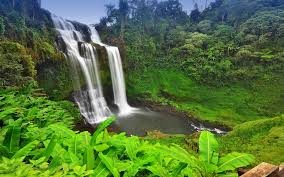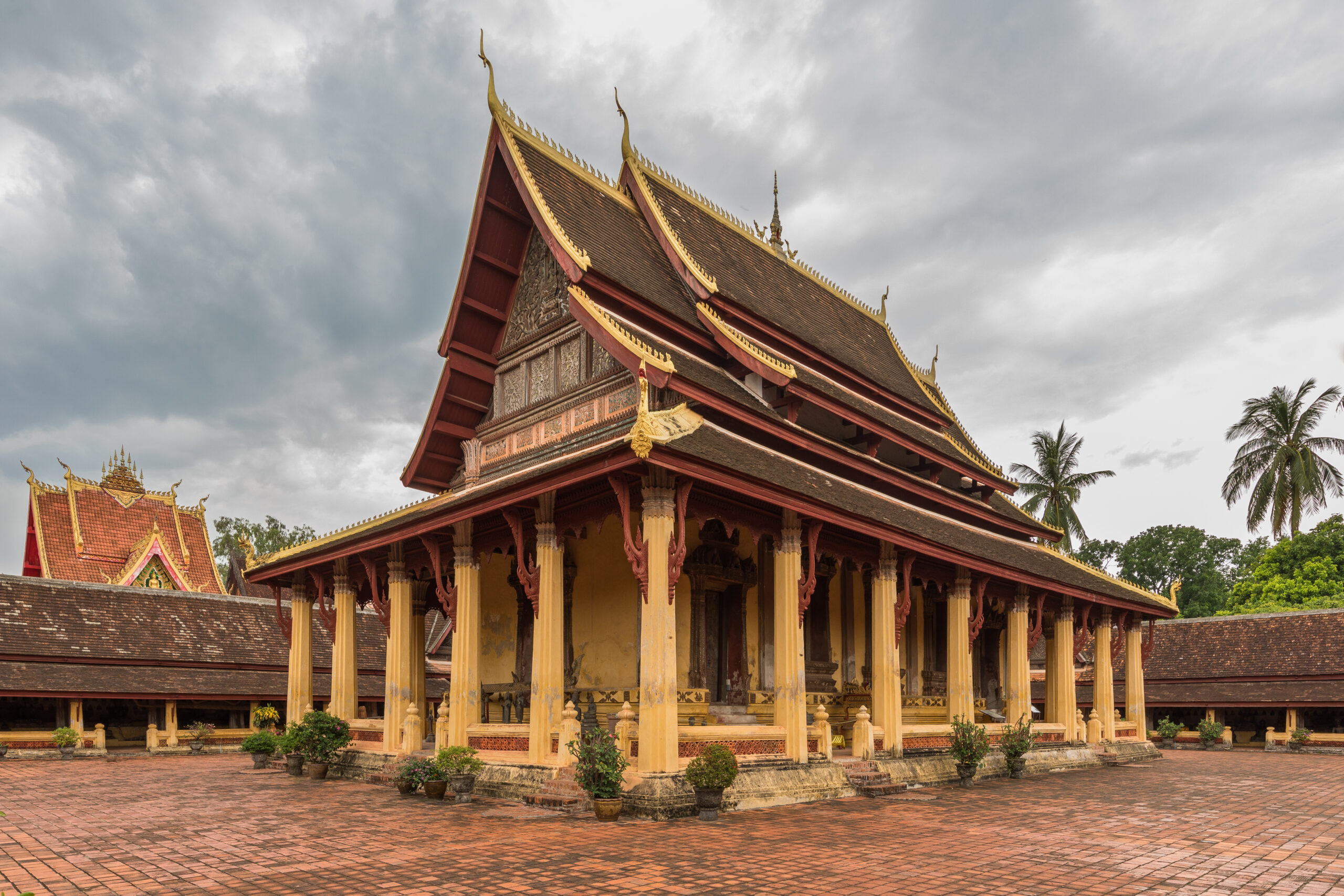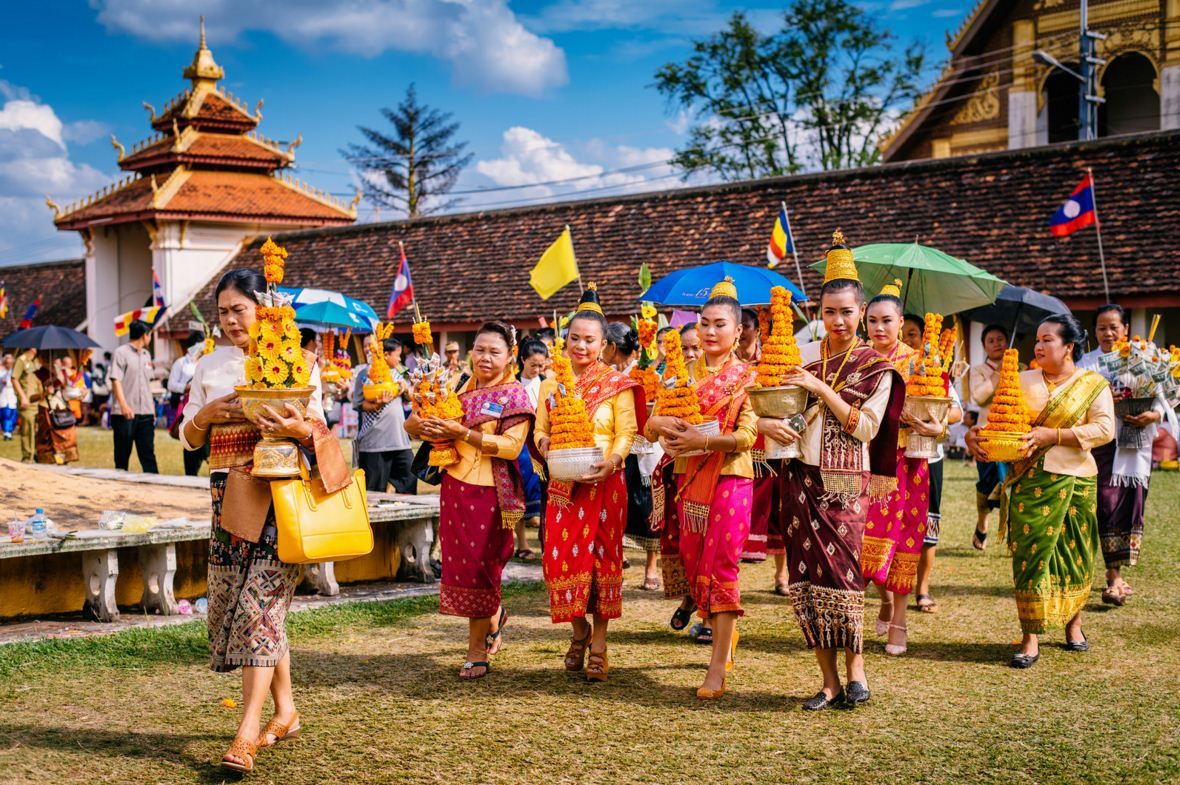1. Overview
Pakse, the capital of Champasak Province, serves as the gateway to the beautiful Bolaven Plateau. Known for its cool climate, lush landscapes, waterfalls, and coffee plantations, this area is a serene escape into nature. The Bolaven Plateau is particularly famous for its stunning waterfalls and the cultivation of coffee, which thrives in the region’s high-altitude environment.
Name: Pakse and Bolaven Plateau
Location: Champasak Province, Southern Laos
Coordinates: Pakse (15.1370° N, 105.7833° E), Bolaven Plateau (15.0620° N, 106.2611° E)
Best visited: Ideal for nature lovers, adventure enthusiasts, and coffee aficionados
2. History of the Place
The Bolaven Plateau has been an important agricultural hub for Laos, especially known for its coffee production, which dates back to the French colonial era. Pakse, as a major city in southern Laos, has a rich history tied to its strategic location along the Mekong River and its development as a transportation and trade hub.
- Key Facts:
- Bolaven Plateau was once a volcanic region, creating fertile soil for agriculture.
- The area became a center for coffee cultivation during the French colonial era.
- Pakse was established as a French administrative center and grew into a regional capital.
- The plateau’s altitude ranges from 1,000 to 1,350 meters (3,280 to 4,430 feet), making it cooler than most of Laos.
- The Bolaven Plateau is home to numerous waterfalls, including the famous Tad Fane and Tad Yuang.
- The area has a diverse ethnic population, including the Lao, Katang, and Alak peoples.
- Pakse is a modern city with a mix of colonial and contemporary architecture.
- Bolaven is the source of the Champasak Province’s coffee, considered some of the best in the world.
- The region’s biodiversity includes various species of flora and fauna, including elephants in the wild.
- Pakse and Bolaven are known for eco-tourism, offering trekking, waterfall visits, and coffee tours.
3. Location
4. What Makes “Pakse and Bolaven Plateau” Popular?
Pakse and the Bolaven Plateau are popular for their picturesque landscapes, cool climate, and incredible waterfalls. The region’s coffee plantations offer unique experiences for visitors who want to explore the origins of Laos’ coffee industry. Visitors also enjoy trekking through lush forests and visiting the region’s spectacular waterfalls.
- Natural Beauty: Scenic waterfalls like Tad Fane, Tad Yuang, and many others
- Coffee Culture: Explore the coffee plantations and learn about the region’s coffee production.
- Adventure: Ideal for trekking, eco-tourism, and exploring the lush forests.
5. Overall Ratings (1 to 5 Stars)
Pakse and Bolaven Plateau are highly rated for their natural beauty, cultural significance, and outdoor activities. Visitors love the serene atmosphere and the opportunity to experience the local coffee culture.
Overall Rating: ⭐⭐⭐⭐⭐ (5/5)
Natural Beauty: ⭐⭐⭐⭐⭐ (5/5)
Cultural Significance: ⭐⭐⭐⭐⭐ (5/5)
Adventure Activities: ⭐⭐⭐⭐⭐ (5/5)
Atmosphere & Environment: ⭐⭐⭐⭐☆ (4/5)
Tourist Friendliness: ⭐⭐⭐⭐⭐ (5/5)
6. Weather
The Bolaven Plateau has a cooler climate than much of Laos, making it an ideal retreat from the heat of the lowlands. The dry season from November to February offers the most pleasant weather for outdoor activities.
- Best Time to Visit: November to February (cooler, dry season)
- Temperature Range: 20–25°C (68°F to 77°F)
- Wet Season: May to October
- Rain Gear: Advised if traveling during the wet season
7. Nearest Five Hotels
For visitors looking to stay near Pakse and Bolaven Plateau, here are five great hotels that offer convenient access to the region’s attractions:
- Pakse Hotel: Centrally located with comfortable amenities
- Seng Khone Hotel: A modern hotel with excellent service
- Bolaven Farm Lodge: Situated in the heart of the Bolaven Plateau, perfect for nature lovers
- Champasak Grand Hotel: Luxury hotel with a central location in Pakse
- The River Resort: Tranquil riverside location with great views
8. Timings
Most tours of Pakse and the Bolaven Plateau are available during the daytime, typically starting in the morning for the best light and to avoid afternoon rains, especially during the wet season.
- Opening Hours: Typically 8:00 AM – 5:00 PM for day tours
- Best Time to Visit: Morning for a full day of exploration
9. Time Required to Visit
Visitors can spend anywhere from a day to several days exploring Pakse and the Bolaven Plateau, depending on their interest in trekking, waterfall visits, and coffee tours.
- Visit Duration: 1–3 days
- Ideal for: Nature exploration, waterfall visits, and coffee tours
10. Entry Fees & Ticket Booking Details
There is generally no entry fee for the natural sites like waterfalls and the Bolaven Plateau itself, but some attractions or tours (such as coffee plantation visits or eco-trekking) may charge a fee.
- Entry Fee: Free for most natural attractions, fees may apply for specific tours
- Booking: Tours and activities may require prior booking, especially during peak tourist season
11. Things to See & Do
In Pakse and the Bolaven Plateau, visitors can enjoy a variety of activities that highlight the natural beauty and cultural richness of the region.
- Explore: Tad Fane and Tad Yuang waterfalls
- Tour: Visit coffee plantations and learn about the region’s coffee production
- Hike: Trek through lush forests and the plateau’s rugged terrain
- Relax: Enjoy the tranquil atmosphere of the region
12. Best Time to Visit
The dry season is the best time to visit Pakse and the Bolaven Plateau, when the weather is cooler and more comfortable for outdoor activities.
- Best Time: November to February (dry, cooler season)
- Time of Day: Early morning for a full day of exploration
13. Nearest Parking Spots
There are plenty of street parking and designated lots near major attractions in Pakse and along the Bolaven Plateau. For more remote areas, local guides often provide transport options.
- Street Parking: Available near major tourist spots
- Public Parking: Available near larger landmarks
- Alternative: Tuk-tuks are a popular transportation option in Pakse
14. Tips for Visitors
When visiting Pakse and the Bolaven Plateau, be sure to wear comfortable shoes for hiking, bring a camera for the stunning landscapes, and carry some cash for local markets and tours.
- Dress Comfortably: Wear sturdy shoes for walking and trekking
- Bring Cash: Some small shops and local guides may not accept cards
- Stay Hydrated: Keep water with you as the weather can be warm even in the cooler season
15. How to Reach the Place
Pakse is easily accessible by car, bus, or plane. From Pakse, the Bolaven Plateau can be reached by private transport, guided tours, or local buses.
- By Car: Pakse is about a 1-hour drive from the Bolaven Plateau
- By Bus: Regular buses operate from Pakse to various points on the plateau
- By Plane: Pakse is served by an airport with flights from Vientiane
16. Nearby Attractions to Combine for the Visit
While visiting Pakse and the Bolaven Plateau, consider exploring other nearby attractions to enrich your experience:
- Vat Phou: A UNESCO World Heritage Site, ancient Khmer ruins near Pakse
- Tad Lo Waterfall: Another beautiful waterfall in the Bolaven Plateau
- Mekong River: The majestic river flows through Pakse, offering scenic views and boat tours



